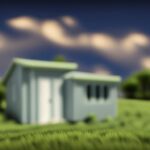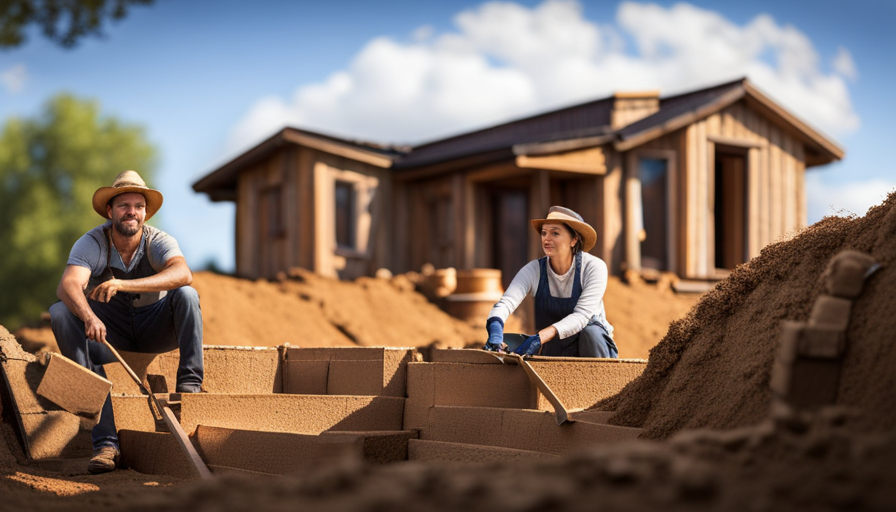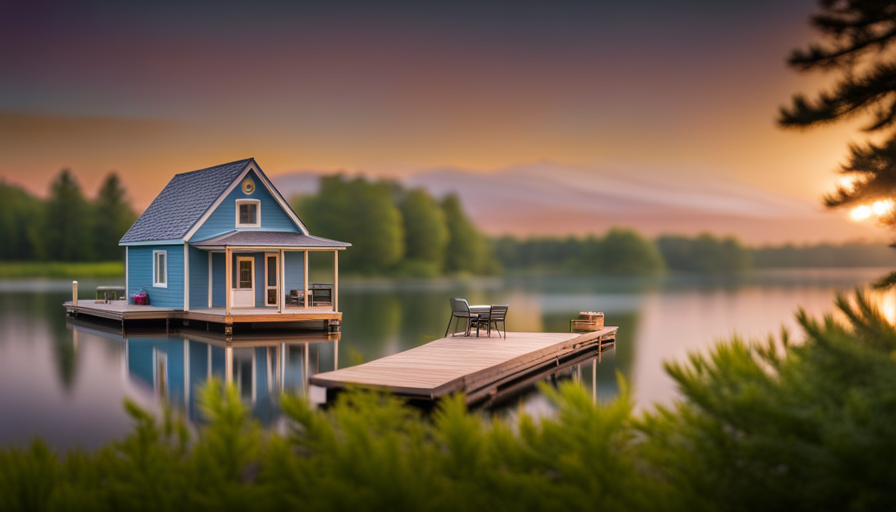Have you ever been curious, like me, about those small black creatures crawling around your house?
It’s a common problem many of us face, and it can be quite frustrating.
But fear not, because in this article, I will guide you through the process of identifying these pesky insects, understanding why they infest our homes, and discovering effective ways to prevent and eliminate them.
From natural remedies to chemical solutions, I will provide you with a range of options to choose from.
Additionally, I will share tips on how to maintain a bug-free home and when it’s time to seek professional help.
So, let’s dive in and unravel the mystery of these tiny black bugs together, ensuring a bug-free and peaceful living environment.
Key Takeaways
- Different types of bugs require different treatment methods, so it’s important to identify the specific species.
- Regular pest control practices, including the use of appropriate insecticides, can effectively eliminate tiny black bugs from homes.
- Proactive prevention methods are important to keep homes bug-free.
- Chemical solutions should be used as a last resort and in conjunction with other pest control methods.
Identify the Type of Bug
These tiny black bugs in my house are definitely causing some annoyance. Identifying the type of bug is crucial in order to effectively deal with the infestation.
There are several common types of tiny black bugs found in homes that may be responsible for the problem. One possible culprit is the carpet beetle. These small, oval-shaped insects feed on natural fibers, such as carpet and clothing, and their presence can often be detected by the damage they cause.
Another common type is the black carpet beetle, which is similar in appearance but prefers to feed on dead insects and animal products. Additionally, there are also tiny black ants that may invade homes, particularly in search of food. These ants can be identified by their small size and characteristic trails.
Other potential culprits include fleas, bed bugs, and gnats. Signs of infestation may vary depending on the type of bug, but common indicators include visible bugs, damage to household items, and itchy bites.
Moving on to the subsequent section about common types of tiny black bugs found in homes, it’s important to understand the specific characteristics and behaviors of each type in order to effectively address the infestation.
Common Types of Tiny Black Bugs Found in Homes
Have you ever encountered those pesky little critters that seem to appear out of nowhere and invade your living space? Tiny black bugs can be a common nuisance in homes, and it’s important to identify the type of bug to effectively deal with them.
Here are some common types of tiny black bugs found in homes:
-
Carpet beetles: These insects are small and oval-shaped, often with colorful patterns on their backs. They can cause damage to carpets, fabrics, and stored food.
-
Gnats: Also known as fruit flies, gnats are small insects that are attracted to ripe fruits and vegetables. They can be found in kitchens and dining areas.
-
Ants: While not always black, some ant species are black in color. They can invade homes in search of food and can be found in kitchens and pantries.
Signs of bug damage in homes include chewed fabrics, holes in food packaging, and small droppings. It’s important to address bug infestations promptly to prevent further damage and potential health risks.
Understanding the types of bugs found in gardens can also help identify potential sources of infestations. Transitioning into the next section, it’s essential to determine the reasons for bug infestations to effectively prevent them in the future.
Reasons for Bug Infestations
There’s nothing more frustrating than discovering an infestation of those pesky little critters in your home, but understanding the reasons behind their invasion is crucial to preventing future bug infestations. When it comes to bug infestations, effective pest control is essential.
Insecticides play a key role in eliminating and preventing the presence of tiny black bugs in your house. Pest control is a science that requires a deep understanding of insect behavior and biology. Insecticides are chemical substances specifically designed to kill or repel insects. They work by disrupting the insects’ nervous system or respiratory system, ultimately leading to their demise. Insecticides come in various forms, such as sprays, powders, and baits, allowing you to target specific areas or infested objects.
When dealing with tiny black bugs, it’s important to identify the specific species to determine the most effective insecticide. Different types of bugs require different treatment methods. For example, if you’re dealing with carpet beetles, a residual spray applied to affected areas can help eradicate the infestation.
Properly using insecticides is crucial for both effectiveness and safety. Always read and follow the instructions on the label, wear protective clothing, and ensure proper ventilation when applying insecticides. Additionally, it’s important to understand that insecticides are just one component of a comprehensive pest control plan.
By incorporating regular pest control practices, including the use of appropriate insecticides, you can effectively eliminate tiny black bugs from your home. Transitioning into the next section about prevention methods, it’s important to note that taking proactive measures is key to keeping your home bug-free.
Prevention Methods
To keep your home bug-free, it’s crucial that you implement proactive prevention methods. Preventing bug infestations requires a combination of strategies that target their entry points and disrupt their breeding and feeding habits.
One effective method is the use of essential oils for bug control. Certain essential oils, such as lavender, peppermint, and eucalyptus, have natural insect-repellent properties. You can mix a few drops of these oils with water in a spray bottle and apply it to areas where bugs are likely to enter, such as windowsills, doorways, and cracks. Additionally, you can use cotton balls soaked in essential oils and place them in cabinets, closets, and other problem areas. The strong scent of these oils acts as a deterrent for bugs, preventing them from infesting your home.
By incorporating essential oils into your bug prevention routine, you can create an inhospitable environment for these pests. Transitioning into the next section, let’s explore natural remedies to get rid of bugs without resorting to chemical pesticides.
Natural Remedies to Get Rid of Bugs
If you want to eliminate pesky bugs from your home, try out these natural remedies that’ll keep them away for good. Natural bug repellents are a great way to deter bugs without using harmful chemicals.
One effective option is peppermint oil, which has a strong scent that bugs don’t like. Simply mix a few drops of peppermint oil with water in a spray bottle and apply it to areas where bugs are present.
Another natural repellent is vinegar. Bugs are repelled by the strong smell of vinegar, so mix equal parts vinegar and water in a spray bottle and apply it to surfaces where bugs tend to gather.
DIY bug traps are also a useful tool for bug control. One simple trap is the fruit fly trap. You can make it by placing a small amount of apple cider vinegar in a jar and covering it with plastic wrap. Poke a few small holes in the plastic wrap and bugs will be attracted to the vinegar but unable to escape.
These natural remedies provide an effective and environmentally friendly way to keep bugs out of your home. Transitioning to chemical solutions for bug control, there are also effective options available.
Chemical Solutions for Bug Control
After exploring natural remedies to get rid of bugs, it’s time to delve into chemical solutions for bug control. While natural methods are effective, sometimes the infestation requires a stronger approach.
Pest control companies can provide specialized treatments that target the specific bug problem in your house. These professionals have access to potent chemical insecticides that can quickly eliminate the tiny black bugs causing havoc in your home.
Chemical bug control products often come in the form of sprays, powders, or foggers. They contain active ingredients that are lethal to bugs, such as pyrethroids or neonicotinoids. When applying these products, it’s crucial to follow the instructions carefully to ensure safety for both humans and pets. It’s also important to keep in mind that chemical solutions should be used as a last resort and with caution.
If you prefer a do-it-yourself (DIY) approach, there are various bug repellents available in stores that contain chemical ingredients. These products come in different forms, including aerosols, liquids, or solid sticks. They can be applied directly to surfaces or sprayed into the air to repel bugs.
However, if the infestation persists despite your efforts, it’s time to consider the next steps to take.
Steps to Take if Infestation Persists
When the pesky invaders just won’t let up, it’s time to consider your next course of action. If the infestation persists even after using chemical solutions, it may be necessary to explore alternative methods.
One option is to try natural insecticides, which are derived from plant-based ingredients and are considered less toxic to humans and pets. These products can be found in various forms such as sprays, powders, or traps, and can be effective in controlling the tiny black bugs in your house.
If natural insecticides do not provide satisfactory results, it may be best to seek professional help from pest control services. These experts have the knowledge and experience to identify the specific type of bug infesting your home and can recommend the most appropriate treatment plan. They may use a combination of methods such as insecticides, baits, or traps to eliminate the pests and prevent future infestations.
Remember, maintaining a bug-free home requires consistent effort.
In the next section, we will discuss tips for preventing and managing bug infestations to ensure a pest-free living environment.
Tips for Maintaining a Bug-Free Home
When it comes to maintaining a bug-free home, there are several key points to keep in mind.
Regular cleaning and decluttering are essential as they eliminate hiding places and food sources for insects.
Proper food storage is also crucial, as it prevents access to food and reduces attractants.
Additionally, regular inspection and maintenance are necessary to identify and address any potential entry points for bugs.
Lastly, sealing entry points such as gaps or cracks in windows, doors, and walls will further prevent insects from invading your home.
Regular Cleaning and Decluttering
To keep these pesky little critters at bay, make sure you’re regularly cleaning and decluttering your house. Here are four essential steps to help you maintain a bug-free home:
-
Vacuum regularly: By vacuuming your floors, carpets, and upholstery, you can eliminate any small bugs or their eggs that may be hiding in these areas.
-
Dust and wipe down surfaces: Dusting and wiping down surfaces not only removes dirt and debris but also helps eliminate any potential hiding spots for bugs.
-
Wash bedding and linens frequently: Regularly washing your bedding and linens in hot water can help kill any bugs or eggs that may have made their way onto these items.
-
Keep trash sealed and dispose of it promptly: Make sure to keep your trash sealed tightly and dispose of it regularly to prevent attracting bugs to your home.
By following these regular cleaning and pest control methods, you can significantly reduce the likelihood of encountering those tiny black bugs in your house.
Proper food storage is another crucial aspect of bug prevention, which we’ll explore next.
Proper Food Storage
After ensuring that my house is clean and clutter-free, it’s important to focus on proper food storage to prevent the presence of tiny black bugs.
Proper food storage is crucial in keeping these pests at bay. Firstly, all food items, including grains, cereals, and pet food, should be stored in airtight containers. This prevents the bugs from accessing the food and laying eggs.
Additionally, perishable items should be stored in the refrigerator to discourage bug infestations. It’s also advisable to regularly clean the pantry and cupboards, removing any spilled or expired food.
To further enhance the effectiveness of proper food storage, natural remedies like bay leaves, cloves, or peppermint can be placed in the storage areas as these bugs dislike their strong scent.
By following these guidelines, we can maintain a bug-free home.
Moving forward, regular inspection and maintenance will be discussed to ensure long-term bug prevention.
Regular Inspection and Maintenance
Let’s now talk about the importance of regularly inspecting and maintaining our living space to keep it bug-free. Regular inspection is crucial to identify any potential entry points for bugs and address them promptly. Here are some bug-proofing methods that you should consider:
- Check windows and doors for any gaps or cracks that bugs can use as entry points.
- Inspect the exterior of your house, including walls and foundations, for any cracks or holes that bugs can crawl through.
- Keep your living space clean and decluttered to minimize hiding places for bugs.
- Regularly clean and vacuum areas that are prone to bugs, such as kitchen cabinets and pantry shelves.
- Use weatherstripping and caulking to seal gaps and cracks in walls, windows, and doors.
By regularly inspecting and maintaining your living space, you can effectively prevent bugs from entering your home.
Now let’s move on to the next section about sealing entry points.
Sealing Entry Points
Inspect your windows and doors for any gaps or cracks, as these can serve as entry points for bugs to crawl into your living space. To prevent these tiny black bugs from infiltrating your home, it is essential to seal these entry points using effective techniques and DIY solutions. One way to seal gaps and cracks is by using silicone caulk, which provides a durable and long-lasting seal. Additionally, weatherstripping can be applied to windows and doors to create a tight seal and prevent bug intrusion. Another effective method is to use door sweeps or thresholds to seal the gap between the door and the floor. By employing these sealing techniques, you can significantly reduce the chances of bugs finding their way inside your house. However, if the infestation persists despite your best efforts, it may be time to seek professional help for a more comprehensive solution.
When to Seek Professional Help
If you’re finding yourself overwhelmed by the invasion of tiny black bugs in your house, it may be time to consider calling in a professional for help. Pest control companies specialize in identifying and eliminating pests, ensuring that your home is bug-free and safe for you and your family.
Here are three signs that indicate a severe infestation and the need for professional intervention:
-
Persistent Presence: If you’ve tried various DIY methods but the tiny black bugs keep coming back, it could be a sign of a severe infestation. Professional pest control companies have the expertise to identify the root cause and implement effective strategies to eliminate the bugs for good.
-
Property Damage: Tiny black bugs, such as carpet beetles or booklice, can cause significant damage to your belongings. If you notice holes in fabrics, damaged books, or chewed wires, it’s a clear indication of a severe infestation that requires professional intervention.
-
Allergic Reactions: Some people may experience allergic reactions to the bites or droppings of certain bugs. If you or your family members develop unexplained rashes, itching, or respiratory issues, it’s crucial to seek professional help to identify and eradicate the pests responsible.
Remember, professional pest control companies have the knowledge, experience, and resources to effectively tackle severe infestations. Don’t hesitate to reach out to them for assistance in restoring the comfort and safety of your home.
Frequently Asked Questions
How do I identify the specific type of bug I have in my house?
To identify the specific type of bug in your house, I’d recommend conducting a thorough investigation. Start by examining the bug’s physical characteristics, such as its size, shape, and color. Look for distinguishing features like wings or antennae.
Additionally, consider the bug’s behavior and habitat. Common hiding places for bugs include cracks, crevices, and dark, damp areas. By carefully observing and researching these factors, you can narrow down the possibilities and determine the exact species of bug in your home.
What are some natural remedies I can use to get rid of these tiny black bugs?
To naturally get rid of tiny black bugs in your house, there are several effective remedies you can try.
One option is to create a mixture of equal parts vinegar and water, then spray it directly on the affected areas.
Another method is to use diatomaceous earth, a natural substance that kills bugs by dehydrating them.
To prevent future infestations, keep your house clean and dry, seal cracks and crevices, and remove any potential food sources.
Are there any chemical solutions that are effective for controlling these bugs?
Chemical solutions can be effective for controlling tiny black bugs in your house. Unlike natural remedies, chemical solutions contain ingredients specifically designed to target and eliminate these pests. They often provide immediate results and can be highly effective in the short term.
However, it’s important to note that the long-term effectiveness of chemical solutions may vary. Some bugs may develop resistance over time, requiring the use of different chemicals or alternative methods to maintain control.
What steps should I take if the bug infestation in my house persists?
If the bug infestation in my house persists, I should take immediate action to prevent further infestations.
Firstly, I need to identify and seal any potential entry points for bugs, such as cracks in walls or gaps around windows and doors.
Secondly, I should eliminate any sources of food and water that may be attracting the bugs.
Lastly, it’s crucial to regularly clean and declutter my house, paying close attention to common hiding places for bugs, such as behind appliances, in dark corners, and under furniture.
When should I consider seeking professional help for dealing with these tiny black bugs in my house?
When dealing with persistent bug infestations, it’s crucial to know when to seek professional help. If the tiny black bugs in your house continue to multiply despite your best efforts with DIY methods, it may be time to call in the experts.
Seeking professional help ensures a thorough and effective treatment, especially when dealing with a large-scale infestation. Their expertise and specialized equipment can eradicate the bugs and provide long-term solutions, giving you peace of mind.
Conclusion
In conclusion, dealing with tiny black bugs in your house can be frustrating, but it’s important to identify the type of bug and take appropriate measures to get rid of them.
By following prevention methods, using natural remedies or chemical solutions, and maintaining a clean home, you can successfully eliminate these pests.
Remember, "an ounce of prevention is worth a pound of cure," so stay vigilant and address any infestations promptly to ensure a bug-free living environment.
Hi, I’m Emma. I’m the Editor in Chief of Tiny House 43, a blog all about tiny houses. While tree houses are often associated with childhood, they can be the perfect adult retreat. They offer a cozy space to relax and unwind, surrounded by nature. And since they’re typically built on stilts or raised platforms, they offer stunning views that traditional homes simply can’t match. If you’re looking for a unique and romantic getaway, a tree house tiny house might just be the perfect option.
















